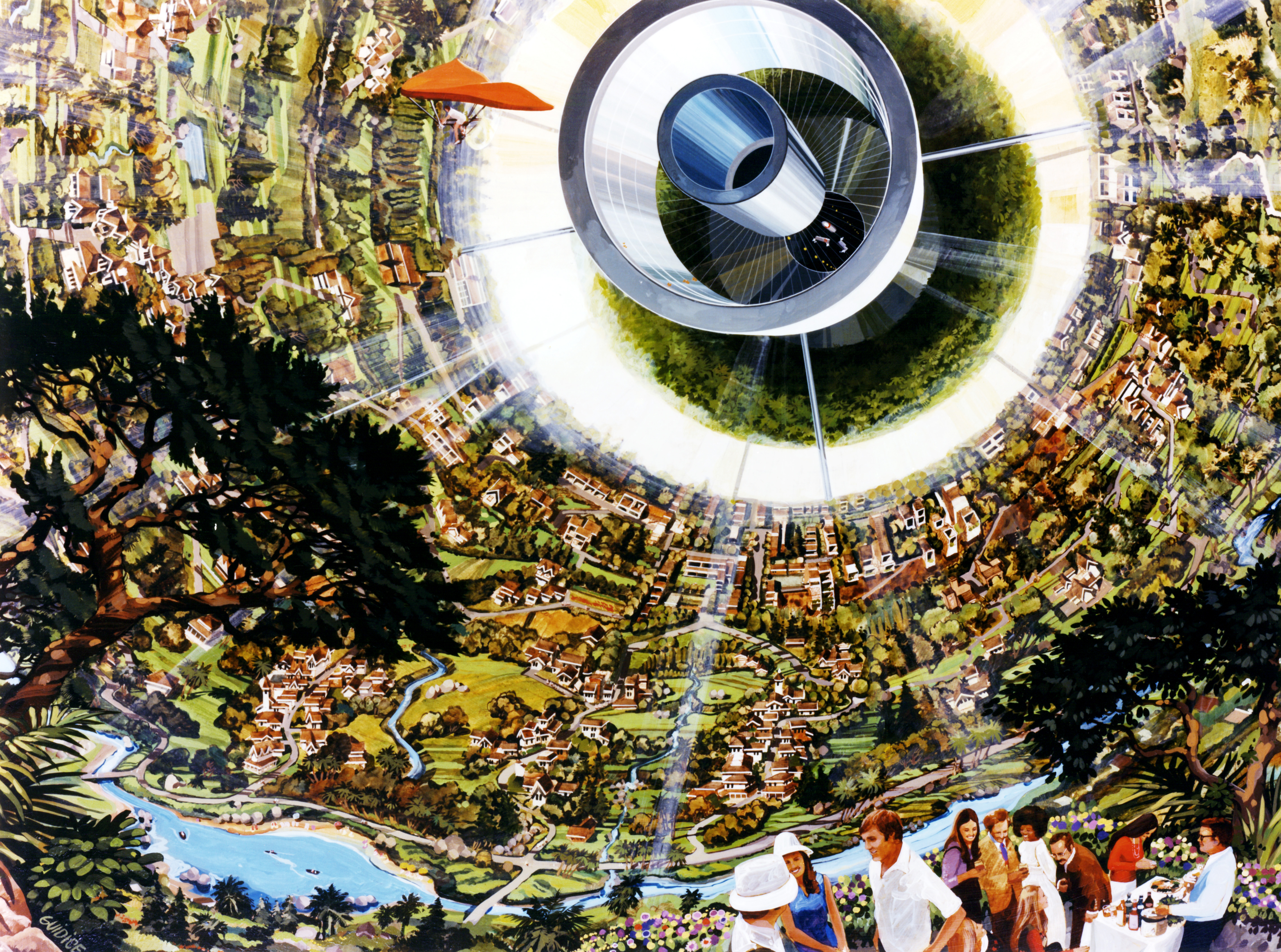In a book which sprang from the Whole Earth Catalog successor, CoEvolution Quarterly, Stewart Brand included his 1975 discussion about space colonization with physicist Gerard O’Neill. The interviewee’s take on the economics of space travel was ridiculously hopeful for the time (and still in ours) but not theoretically impossible in the long run if we last. An excerpt:
Stewart Brand:
If “in wildness is the preservation of the world,” then in what is the preservation of the space colony?
Gerard O’Neill:
Making it wild, I think. The long-term plan, really dream, that I would have is a situation in which, in 50, 100, 150 years, it would be so cheap to replicate large communities that you would be building quite large ones, many, many square miles in land area for each one, and they would be very thinly populated. And so the natural development it seems to me, is toward a situation where you have a great many wild species involved, and as wild an environment as you choose to make. I would imagine one on which there is a lot of forest and park area and wild areas, and a relatively small amount which is manicured and put into the form that people like to have for their dwellings.
Stewart Brand:
Now you’re restating your question, whether a planet’s surface is the best place for a wilderness?
Gerard O’Neill:
Maybe so. But this situation that I was just describing, this possibility if pursued, is one that could occur both on the Earth and in the communities of course. Because the existence of the space communities as a place to which many people might choose to move would also be perhaps the only realistic non-violent way in which the Earth’s population might really decrease.
Stewart Brand:
I’m trying to imagine the trapped feeling that one might have. Travel between communities would be relatively easy. Travel to the Earth’s surface and back would be relatively hard. Is that correct?
Gerard O’Neill:
It would be interesting to compare it in terms of real income. Passage between the colonies and the Earth probably corresponds to passenger travel back and forth between Europe and the United States in, say, the 1700’s. It’s the kind of thing that Benjamin Franklin did to go and negotiate treaties in France. It was not the sort of thing that the ordinary guy was able to accomplish.
The cost of going back and forth to the Earth – I made some rough estimates on what that might be with the technology of let’s say 20 – 30 years from now, still nothing far out like nuclear power or anything like that – and came out to about $3,000 per person for a round trip. Among the colonies it should be very easy, very cheap. From one community to another, even 5,000 miles away would probably be as little as $100 or something like that. A few dollars in energy costs is enough to launch a vehicle over that kind of distance.•
Tags: Gerard O'Neill, Stewart Brand

